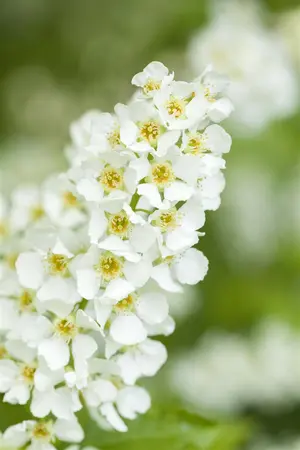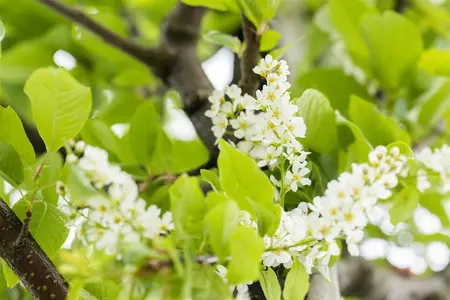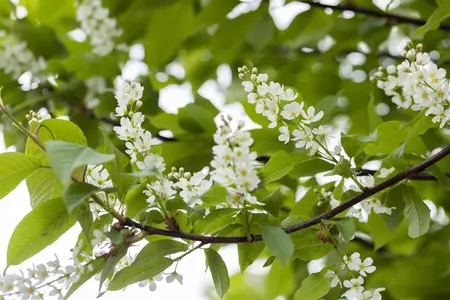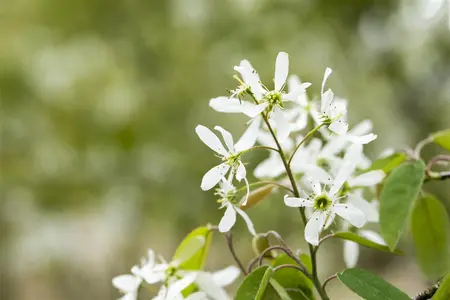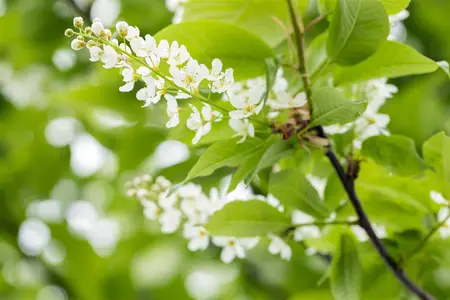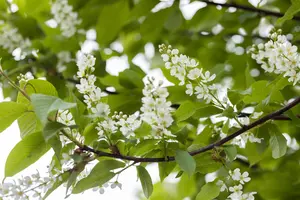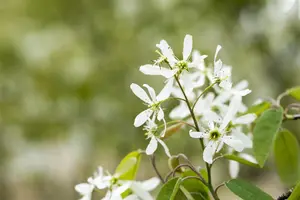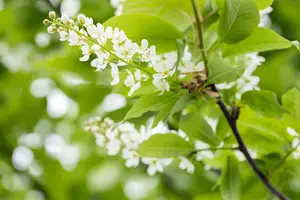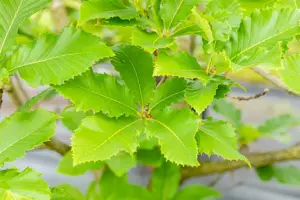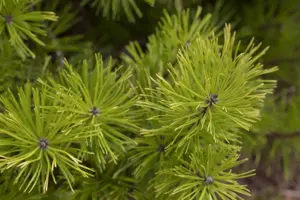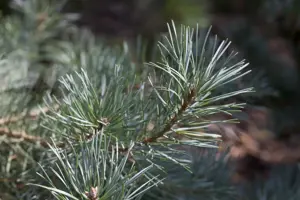Prunus padus - SOLITAIR 250-300 CM C90
Prunus padus - SOLITAIR 250-300 CM C90
Description
The Bird cherry (Prunus padus) is a sprawling, multi-stemmed large shrub with decorative, black, round fruits. These exude a strong fragrance. It produces white flowers arranged in clusters from April to May. The Bird cherry also has matt, egg-shaped, medium-green leaves. In a sunny to semi-shady location, it usually reaches a height of around 10 metres and grows to a width of around 8 metres. The Bird cherry makes no particular demands on the soil.
Synonym
Synonyms (botanical): Padus avium.
Bulletpoints
* Fruiting ornament
* light brown shoots
* strongly scented flowers
* attractive yellow-red autumn colouring
* late frost-tolerant, shade-tolerant, flood-tolerant, cannot be planted over, long-term flood-tolerant, trunk protection recommended
leaves
The deciduous leaves of Bird cherry are medium green, ovate, matt, alternate. Bird cherry is bright yellow-red in autumn.
Bark
Dark grey bark makes this plant an eye-catcher in any garden.
Spread
Europe to Asia.
Frost hardiness
The Bird cherry has good frost hardiness.
Growth
Spreading, multi-stemmed.
Water
The plant has a medium water requirement.
Location
Preferred location in a sunny to semi-shady position.
Soil
No special requirements.
Planting time
Container plants can be planted all year round, except when the soil is frozen and in summer heat (over 30°C).
Care
- A slow-release fertiliser can be used in spring. This releases the nutrients slowly and continuously so that the plant is evenly supplied over a longer period of time.
- Watering less frequently, but thoroughly and thoroughly, encourages the plant roots to penetrate deeper into the soil. This enables the plant to survive dry periods better.
Flower
The white flowers of Bird cherry appear in clusters from April to May. They are strongly scented.
Fruit
The black, round fruits of Prunus padus are particularly decorative. These appear from September.
Use
Solitary, ornamental shrub, bird food plant
Shoots
The shoots of Prunus padus are light brown in colour.
Root
Densely branched.

- Article number6
-
EAN codePRPADUS-SO250300C90
- Latin namePrunus padus
- catalogLandscape shop

